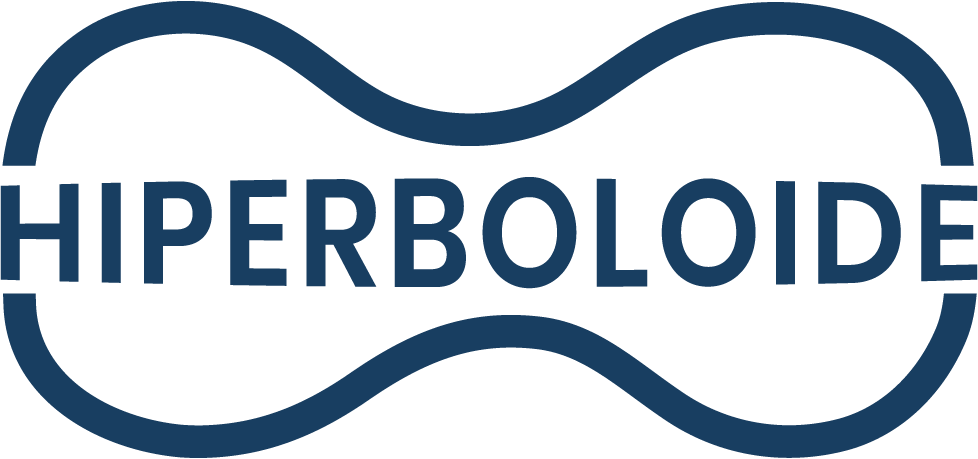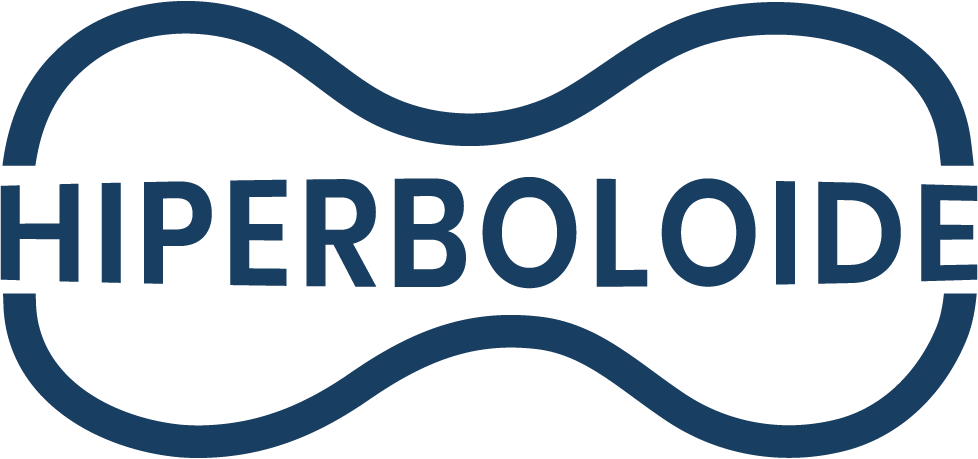Your cart is currently empty.
Exercises
Instructions
The Hyperboloid Method has 27 exercises according to the topics below.
Initially, the patient must exhale slowly while flexing the head. Then, you must slowly inhale the air, while performing the movement of extending your head and neck. If the patient experiences any pain when performing the movement, the movement must respect the range limit, thus avoiding pain. The main use of exercise is to promote relaxation of the anatomical chain to be treated.
Expert tip: You need to maintain bilabial contact during the exercise, without tooth contact during exhalation. This exercise helps the patient control breathing, also providing relaxation of the stabilizing muscles of the neck and jaw, a fundamental step that must precede exercises with the Hyperboloid.
Repetitions/duration: The patient must remain seated, with their back closed and perform 3 to 15 repetitions.
The patient must close their hand and place it vertically below the chin, applying a force opposite to opening the mouth, with the lips sealed. With the mouth closed, without tooth contact and with the hand exerting opposing force, the patient must remain in this position for 15 to 30 seconds. If possible, the patient should keep the tongue against the roof of the mouth.
Main use: Relaxation of the anatomical chain to be treated.
Expert tip: Check that the mental region is aligned with the tip of the nose, allowing visual alignment.
Repetitions/duration: Perform 15 to 30 seconds of isometric contraction.
The patient must close his hand and place it horizontally on his chin, while moving the jaw laterally. Thus, the closed hand will apply a force opposite to the direction of the mouth, returning to the neutral position. However, this should not occur, as the patient must perform a counter and isometric resistance (stop). This position must be maintained with lip sealing and without tooth contact. Perform the same exercise on the opposite side for up to 30 seconds, following the health professional's recommendations.
Remember to ask the patient to perform the movement on both sides, so that contralateral and lateral structures are stretched.
Main use: Relaxation of the anatomical chain to be treated.
Repetitions/duration: Perform between 15 and 30 seconds of isometric contraction.
In this exercise, the patient must place the thumb on the chin, the tongue on the roof of the mouth, seal the lips and then perform protrusion, holding it for between 10 and 30 seconds. Main use: relaxation of the anatomy chain to be treated. After the 4 preparatory exercises, used to start treatments that use Hyperboloid as an aid, we move on to the specific exercises.
Repetitions/duration: Perform between 15 and 30 seconds of isometric contraction.
The patient must place the Hyperboloid in the midline of the mouth and squeeze it, then protrude until the end of the range of movement, then return to the starting position and remove the compression of the Hyperboloid, without letting it fall. Repeat the process. If there is pain, the limit of range of motion without pain must be respected.
Main use: Treatment of temporomandibular disorders.
Expert tip: The Hyperboloid tends to slide constantly, making it necessary to maintain pressure in the midline, a fundamental exercise for training proprioception.
Repetitions/duration: Perform 3 to 6 repetitions, or as determined by your healthcare professional.
The Patient must place the Hyperboloid in the midline of the mouth and squeeze it, then retrude until the end of the range of movement, then return to the starting position, finally removing the compression of the Hyperboloid, without letting it fall. Repeat this process. Repeat the process. If there is pain, the limit of range of motion without pain must be respected.
Main use: Treatment of temporomandibular disorders.
Expert tip: The Hyperboloid tends to slide constantly, making it necessary to maintain pressure in the midline, a fundamental exercise for training proprioception.
Repetitions/duration: Perform 3 to 6 repetitions, or as determined by your healthcare professional.
The Patient must place the Hyperboloid in the midline of the mouth and squeeze it, then perform a lateral movement to one side (generally indicated by the health professional) until the end of the range of movement, returning to the initial position and removing the compression of the Hyperboloid, without letting it fall. Repeat this process. Upon professional recommendation, the patient should move laterally to the right and left in some cases. If there is pain, the limit of range of motion without pain must be respected.
Main use: Treatment of temporomandibular disorders.
Expert Tip: Always position the Hyperboloid in the midline.
Repetitions/duration: Perform 3 to 6 repetitions, or as determined by your healthcare professional.
The patient must place the tip of the tongue on the roof of the mouth and keep it in this position, then opening the mouth to its maximum width, without any discomfort, finally returning to the starting position. Repeat this process.
Main use: Completion of the exercise protocol, in addition to equalizing and reestablishing the balance of the target muscles and assisting in the treatment of temporomandibular disorders.
Expert tip: When the mouth opening movement occurs while the tongue is on the roof of the mouth, the movement of the TMJ tends to be more harmonious.
Repetitions/duration: Perform 3 to 15 repetitions, or as determined by your healthcare professional.
The correct size Hyperboloid must be placed inside the patient's mouth, who will chew it as if the instrument were food. Chewing, however, should be unilateral, alternating and at a slower speed than the patient's usual speed. For cases of Facial Paralysis, another specific protocol must be followed. If there is pain, the limit of range of motion without pain must be respected. Main use: Facial Paralysis, Xerostomia, Halitosis, Burning Mouth, Masticatory guidance, Jogren's Syndrome, Bruxism and complementation for Angle Class III.
Expert tip: If the patient performs the exercises lying down, the Hyperboloid with wire should be used.
Repetitions/duration: Perform 3 minutes of exercise, or as determined by your healthcare professional.
The correct size Hyperboloid should be placed inside the lower or upper lip, as assessed by the healthcare professional. Then, the patient must perform rhythmic contractions so that the Hyperboloid moves towards the molar teeth or the back of the mouth. The mouth must be closed throughout the exercise, and the Hyperboloid must avoid contact with the tongue, so that the buccinator is toned. The exercise can be performed on the left or right, upper or lower sides, according to the health professional's determination.
Main use: Facial Paralysis.
Expert tip: We know that toning exercises are difficult to perform, but they can generate very positive results.
Repetitions/duration: Perform 3 to 6 repetitions, or as determined by your healthcare professional.
The patient must place the Hyperboloid with a thread in the central region of the upper or lower lip (genial sulcus region). Ex.: If the Hyperboloid is on the upper lip, the patient must move it downwards; If it is on the lower lip, you need to pull it up. The lip must be kept sealed throughout the exercise.
Main use: Class II – 1, oral deviation and deviated septum.
Repetitions/duration: Perform 3 to 15 repetitions, or as determined by your healthcare professional.
The Patient must place the Hyperboloid with a thread on the lateral region of the upper or lower lip (region of the genial sulcus). Ex.: If the Hyperboloid is on the left upper lip, the patient must pull it downwards/right; If it is on the lower right lip, it needs to be pulled up/left. The patient must keep the lip sealed throughout the exercise.
Main use: Facial Paralysis and Class II-B.
Expert tip: The patient may often find it difficult to perform the exercises, but don't give up.
Repetitions/duration: Perform 3 to 15 repetitions, or as determined by your healthcare professional.
The patient must put their tongue out of their mouth and pass the elastic to the bottom of the mouth, pulling the dental floss until the elastic comes out completely. For this process, which aims to improve proprioception, it is recommended to use a medium-sized 3/8" latex orthodontic elastic. If possible, it is recommended to perform the exercise with your mouth closed.
Main use: Facial Paralysis and mouth breathing.
Expert tip: Always encourage your patient to perform the exercises, helping to increase proprioception.
Repetitions/duration: Perform 3 to 15 repetitions, or as determined by the healthcare professional.
The Hyperboloid with thread must be placed in the middle and posterior region of the tongue, while the patient holds the thread with the mouth closed and pulls the thread downwards. Thus, the patient must contract the tongue towards the roof of the mouth (palate). This exercise aims to improve the patient's neuromotor control and proprioception.
Main use: Facial paralysis and mouth breathing.
Repetitions/duration: Perform 3 to 15 repetitions, or as directed by your healthcare professional.
Instrument: orthodontic pacifier
The patient must place the orthodontic pacifier inside the mouth and then perform a sucking movement. The more force is applied when executing the movement, the more effective the result will be.
Main use: Facial paralysis and mouth breathing.
Repetitions/duration: Perform 3 to 15 repetitions, or as directed by your healthcare professional.
Instrument: orthodontic pacifier and Hyperboloid
The Hyperboloid must be placed on the upper lip, in the region of the genial groove. Once fixed, the patient must place the orthodontic pacifier inside the mouth and perform sucking movements.
Main use: Facial paralysis.
Repetitions/duration: Perform 3 to 15 repetitions, or as directed by your healthcare professional.
Initially, the Hyperboloid must be placed in the region of the premolar teeth. Then, the patient performs a slight compression and begins lateral movements, both to the right and to the left, taking the Hyperboloid to the last molars. This exercise can be done not only on the right side, but also on the left side, always following the health professional's recommendations.
Main utility: Angle Class I and II -1, performed bilaterally.
Repetitions/duration: Perform 3 to 15 repetitions, or as determined by the healthcare professional.
The Hyperboloid must be placed in the region of the premolar teeth. The patient initially performs a slight compression and begins vertical movements. The patient must hold the Hyperboloid throughout the process, allowing stimulation from the premolar teeth to the last molars. This exercise can be done on both the right and left sides, always following the health professional's recommendations.
Main uses: Angle Class I and II-1, unilateral crossbite and posterior open bite.
Repetitions/duration: Perform 3 to 15 repetitions, or as directed by your healthcare professional.
The patient makes a 30-degree inclination with the Hyperboloid, so that the posterior region of the instrument pulls the incisors anteriorly. The Hyperboloid is placed on the incisor teeth, and the patient holds the instrument while applying slight lingual compression of the upper incisors and buccal compression of the lower incisors, depending on their inclination.
Main utility: Angle Class III.
Repetitions/duration: Perform 3 to 15 repetitions, or as directed by your healthcare professional.
The patient makes a 30-degree inclination with the Hyperboloid, so that the posterior region of the instrument pulls the crossed tooth. The Hyperboloid is placed on the crossed tooth, and the patient holds the instrument while applying slight compression, which depends on the inclination of the tooth (buccal or lingual).
Main use: Bilateral crossbite – crossed teeth.
Repetitions/duration: Perform 3 to 15 repetitions, or as directed by your healthcare professional.
The Hyperboloid is placed in the region of the molar and premolar teeth. The patient must hold the instrument and perform light bites with little compression.
Main use: Angle Class III and Posterior Open Bite.
Expert Tip: Make rhythmic movements with adequate and subtle motor control.
Repetitions/duration: Perform 3 to 15 repetitions, or as directed by your healthcare professional.
The Hyperboloid is placed in the region of the 4 incisor teeth. The patient must hold the Hyperboloid and perform light bites with little compression.
Main use: Anterior open bite and deep bite.
Repetitions/duration: Perform 3 to 15 repetitions, or as directed by your healthcare professional.
Neck, as well as scapular and thoracic movements, are associated with good temporomandibular joint health. Thus, this exercise precedes exercises HB24, HB25, HB26 and HB27. The patient must bring the scapulae together, without too much contraction of the upper trapezius fibers, aiming to develop body awareness by remaining in this position.
Main use: Increased proprioception, postural alignment and TMDs.
Many cases of TMD can be directly related to scapular and cervical movement.
Repetitions/duration: Perform 3 to 15 repetitions, or until you acquire adequate body awareness.
With body awareness acquired through HB23, the patient must perform scapular retraction and place the chin back, flexing the head and keeping the neck in a neutral position, thus allowing cervical straightening.
Main use: Increased proprioception, postural alignment and TMDs.
Expert tip: When performing cervical straightening, the patient may feel the contraction of the posterior cervical muscles.
Repetitions/duration: Perform 3 to 15 repetitions, or until you acquire adequate body awareness.
The patient places the Hyperboloid in the midline of the mouth, compresses the instrument and performs the mandibular retrusion movement. With body awareness assimilated through the HB23 and HB24 exercises, the patient must perform scapular retraction and place the chin back, flexing the head and keeping the neck in a neutral position, creating cervical straightening.
Main use: Increased proprioception, postural alignment and TMDs.
Repetitions/duration: Perform 3 to 15 repetitions, or until you acquire adequate body awareness.
The patient places the Hyperboloid in the midline of the mouth, compresses the instrument and performs the mandibular protrusion movement. With body awareness assimilated through the HB23 and HB24 exercises, the patient must perform scapular retraction and place the chin back, flexing the head and keeping the neck in a neutral position, thus creating cervical straightening.
Main use: Increased proprioception, postural alignment and TMDs.
Repetitions/duration: Perform 3 to 15 repetitions, or until you acquire adequate body awareness.
The patient inserts the Hyperboloid in the midline of the mouth, compresses the instrument and moves the mandibular laterally. assimilated through the HB23 and HB24 exercises, the patient must perform scapular retraction and place the chin back, flexing the head and keeping the neck in a neutral position, thus creating cervical straightening.
Main use: Increased proprioception, postural alignment and TMDs.
Repetitions/duration: Perform 3 to 15 repetitions, or until you acquire adequate body awareness.


